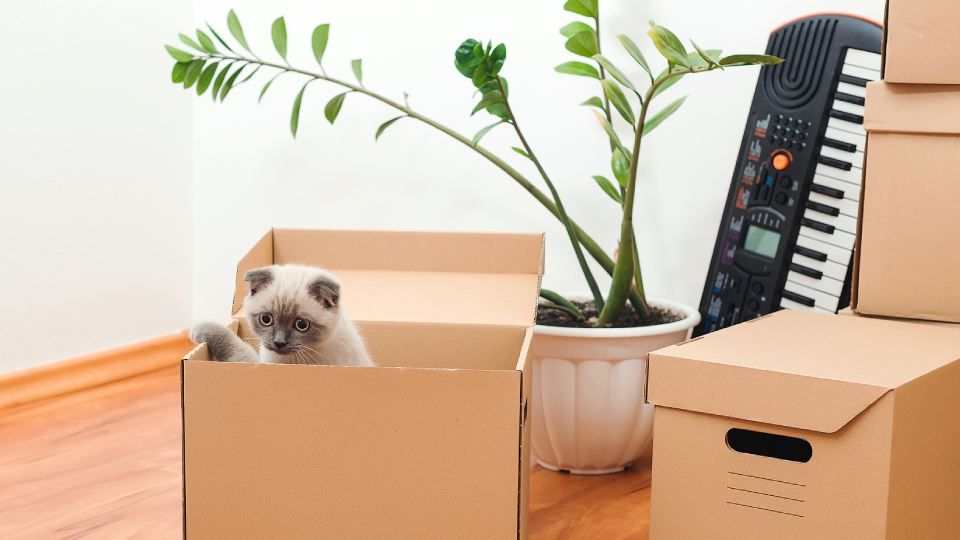Moving with pets? A guide to safe international relocation

Moving abroad is a big step consisting of new surroundings, new routines, and a fresh start. But when you’ve got a pet in tow, it’s not just about packing your suitcase. Your furry family member will need just as much preparation and consideration, if not more. Pets, after all, are creatures of habit. They don’t fully grasp what’s happening, so it’s up to us to make the transition as smooth and stress-free as possible.
Bringing a pet on an international move adds a whole new layer of planning. Between navigating country-specific import regulations, arranging pet-friendly transport, and managing your pet’s well-being, it’s not quite as simple as booking a plane ticket. Thankfully, with the right preparation, you can ensure your pet stays comfortable, safe, and healthy throughout the move. Here’s what to know when relocating internationally with your beloved pet by your side.
Understand pet import requirements early
Before anything else, research the import regulations of your destination country. Each place has its own rules regarding vaccinations, microchipping, blood tests, and quarantine. For example, moving to countries like Australia or New Zealand often involves lengthy pre-departure planning, including rabies blood tests taken months in advance.
It’s important to work closely with a pet relocation specialist or your vet to ensure all necessary documentation, including health certificates and vaccination records, are completed on time. Failing to meet one small requirement could mean delays or denial of entry for your pet.
Choose the right airline and route
Not all airlines transport pets, and those that do may have specific policies regarding breeds, crate dimensions, and even travel seasons. For instance, some airlines don’t allow snub-nosed breeds like pugs or Persian cats due to respiratory risks in the cargo hold.
Book a direct flight if possible, as it reduces stress and minimises the time your pet spends in transit. If a layover is unavoidable, make sure the transfer airport has pet-friendly facilities or proper handling services. Choosing international moving services that have experience handling pet relocations can also help ensure all logistics are in place from start to finish.
Prepare a travel crate in advance
Your pet’s crate is essentially their travel home, so it needs to be airline-approved and spacious enough for them to stand, turn, and lie down comfortably. It should also have proper ventilation and secure locks. Label the crate with your contact information and the words “Live Animal” clearly displayed.
Crate training your pet in advance is one of the most helpful things you can do. Let them explore the crate at home with familiar bedding and toys inside. Over time, gradually increase the amount of time they spend in it. This helps reduce anxiety on the actual travel day, making the crate a safe space rather than a scary box.
Visit the vet before you leave
Schedule a pre-departure health check-up to ensure your pet is travel-ready. Your vet can issue the necessary health certificate and make sure all vaccinations are up to date. This is also the time to ask about solutions to travel anxiety. Some pets may benefit from calming sprays, while others might need prescribed medication.
Also, discuss flea, tick, and worm prevention treatments, as some countries have specific entry requirements related to parasite control. Don’t forget to request copies of all medical records and prescriptions to take with you.
Pack smart: Essentials for your pet
When considering what to pack in your carry-on and moving boxes, don’t forget the items your pet will need during and immediately after travel. These include:
- Collapsible water bowls and enough bottled water
- Small bag of familiar pet food (changing diets abruptly can upset tummies)
- Any necessary medication and instructions
- Leash and collar or harness
- Extra poo bags or litter for cats
- Familiar toys or blankets to comfort them
If your pet is flying in cargo, most items will be inaccessible during transit, so only pack the essentials in their crate that meet airline regulations. For carry-on pets, such as small dogs or cats, airlines may allow soft carriers that fit under the seat – always double-check their pet policy.
Managing your pet’s stress levels
Travel is stressful even for the calmest of pets. Keep them calm by maintaining a familiar routine leading up to departure, like the same feeding times, daily walks, and quiet bonding moments. On moving day, create a peaceful space for them away from the chaos of packing and movers.
Avoid feeding them a full meal just before the flight, but ensure they’ve had water and a small snack a few hours before check-in. Keep calm yourself, as pets often pick up on your stress and emotions.
Once you arrive, give them time to settle in. Start by confining them to a smaller area of the new home with their familiar items before letting them explore the rest of the house. Be patient; it may take days or even weeks for them to fully adjust to new smells, sounds, and surroundings.
Consider professional help
If it all feels overwhelming, you’re not alone. Many families opt to use international moving services that offer pet relocation as part of their package. These specialists handle logistics like permits, flights, and customs clearance, and often have partnerships with trusted airlines and vet clinics. Their experience can make a huge difference, especially when dealing with tight timelines or multiple pets.
Some services even include door-to-door delivery for your pet, ensuring they’re collected from your home and safely delivered to your new address abroad.
Conclusion
Moving internationally with pets can be complex, but it’s definitely manageable with thoughtful planning, a calm approach, and the right support. Your pet is part of the family, and they deserve just as much care during the transition as you do. With enough prep, both of you can start your new adventure abroad feeling safe, settled, and excited for what lies ahead.
If you’re looking for reliable help during your move, Vimbox Movers offers house and office moving services, as well as secure storage solutions right here in Singapore. Whether you’re moving locally or across the globe, our team can help you every step of the way.


